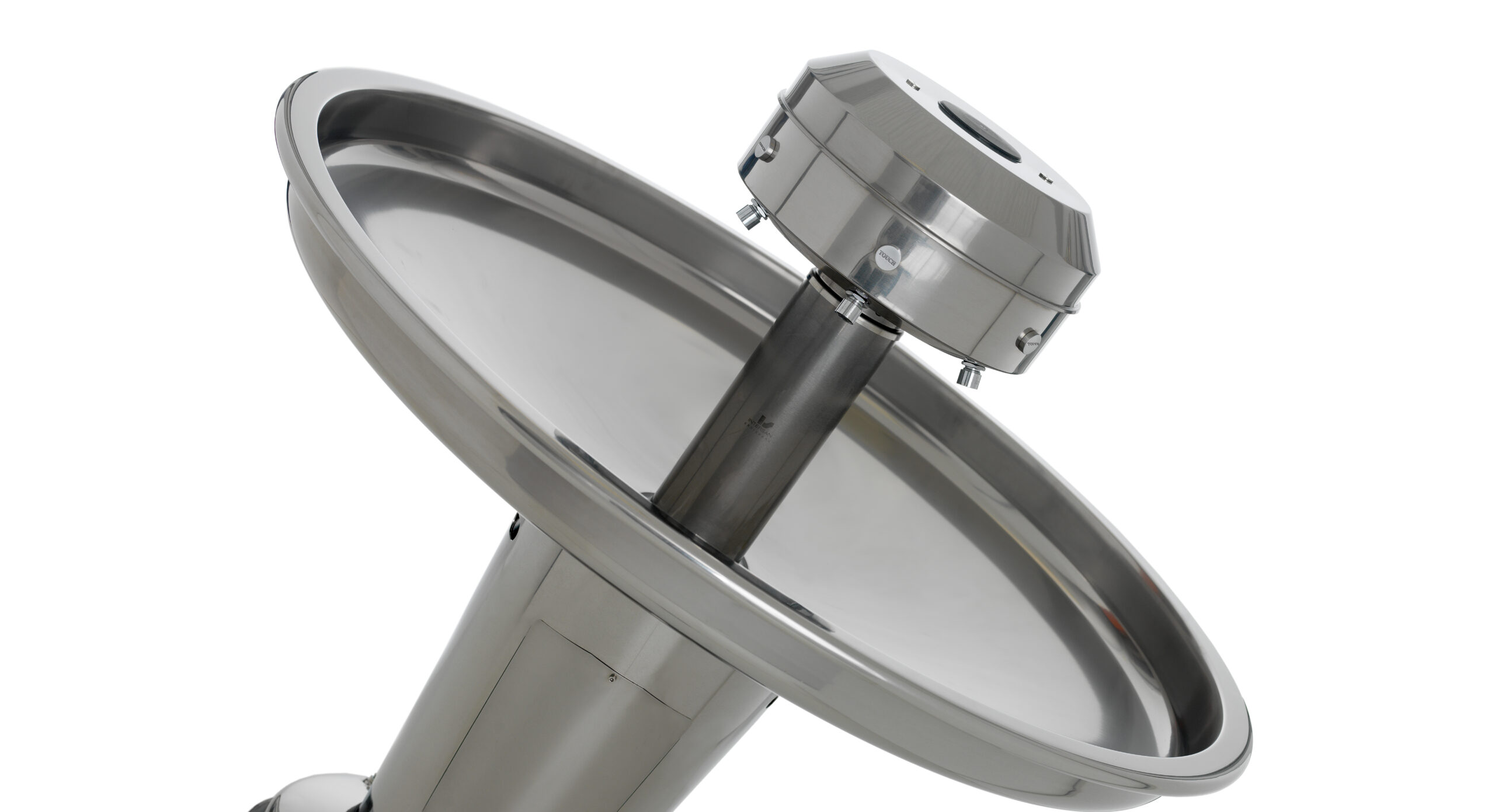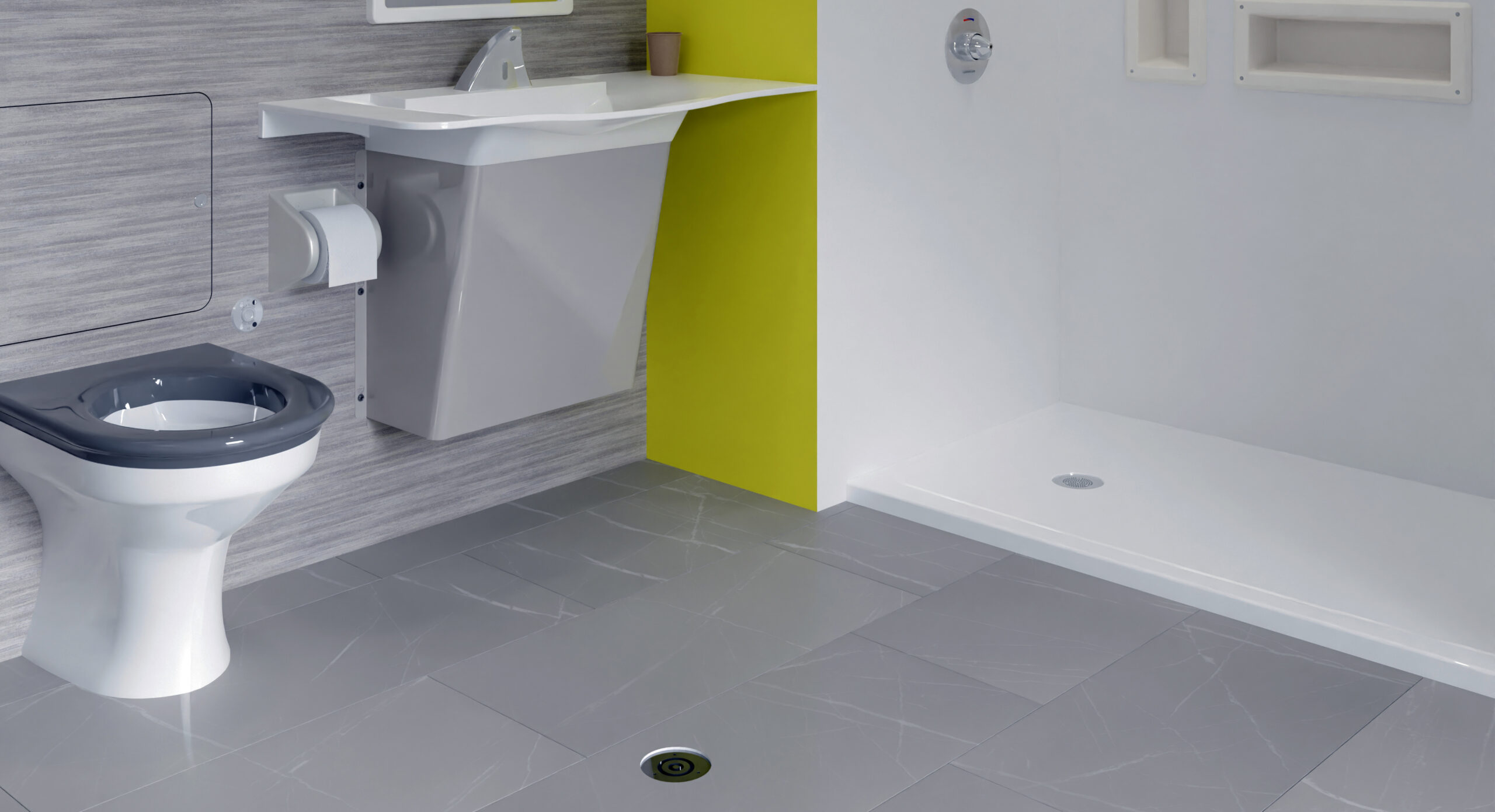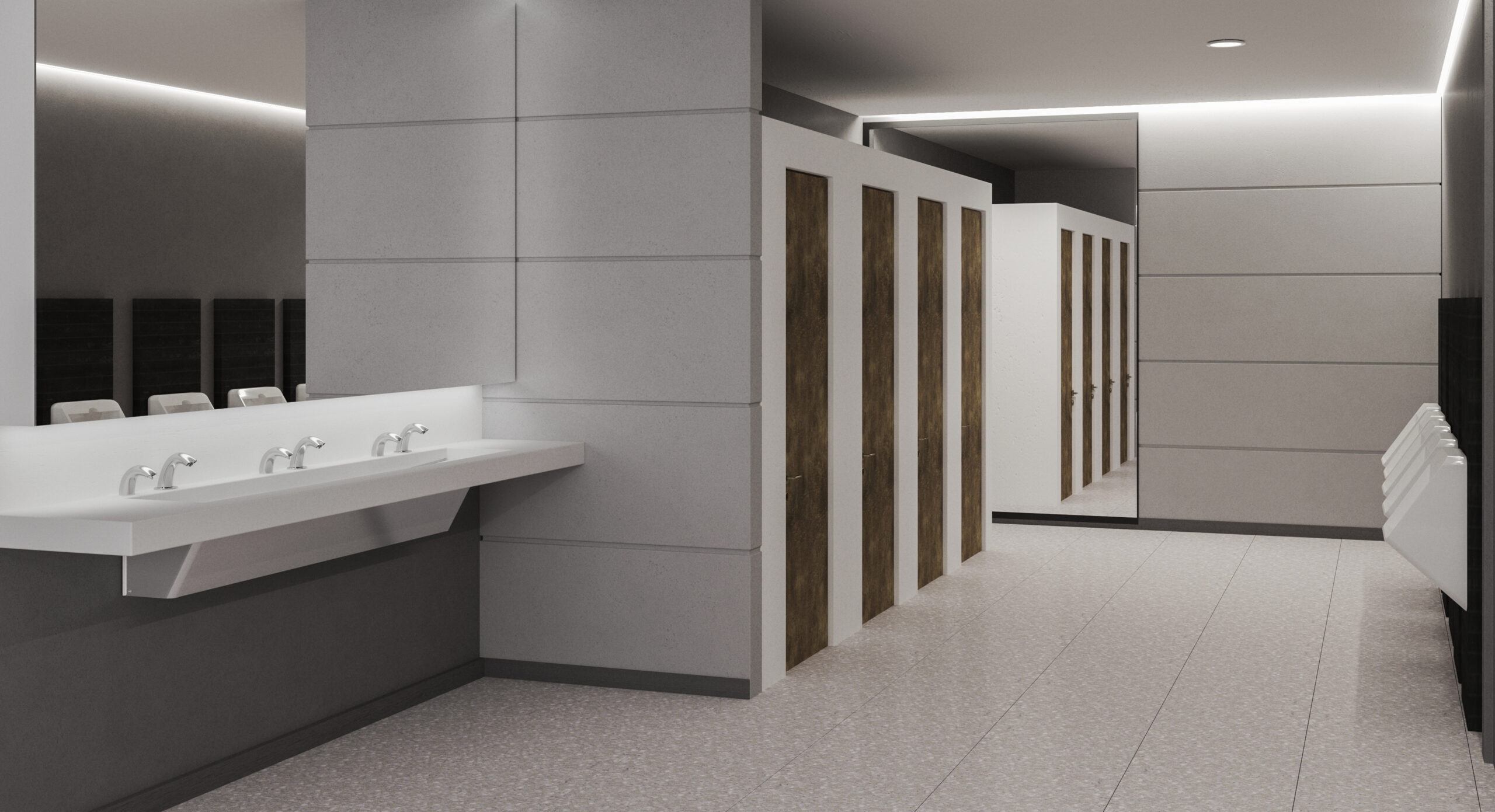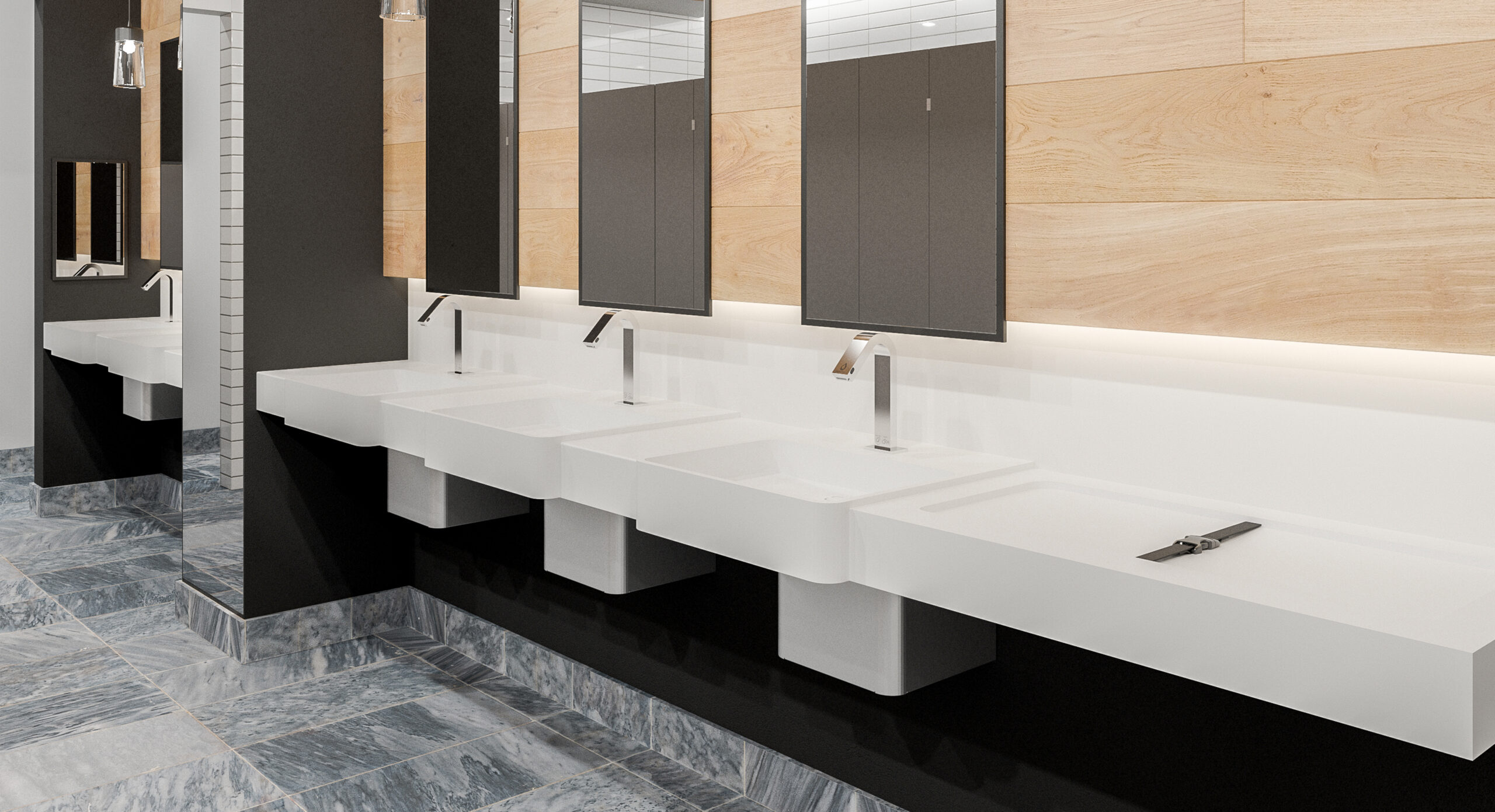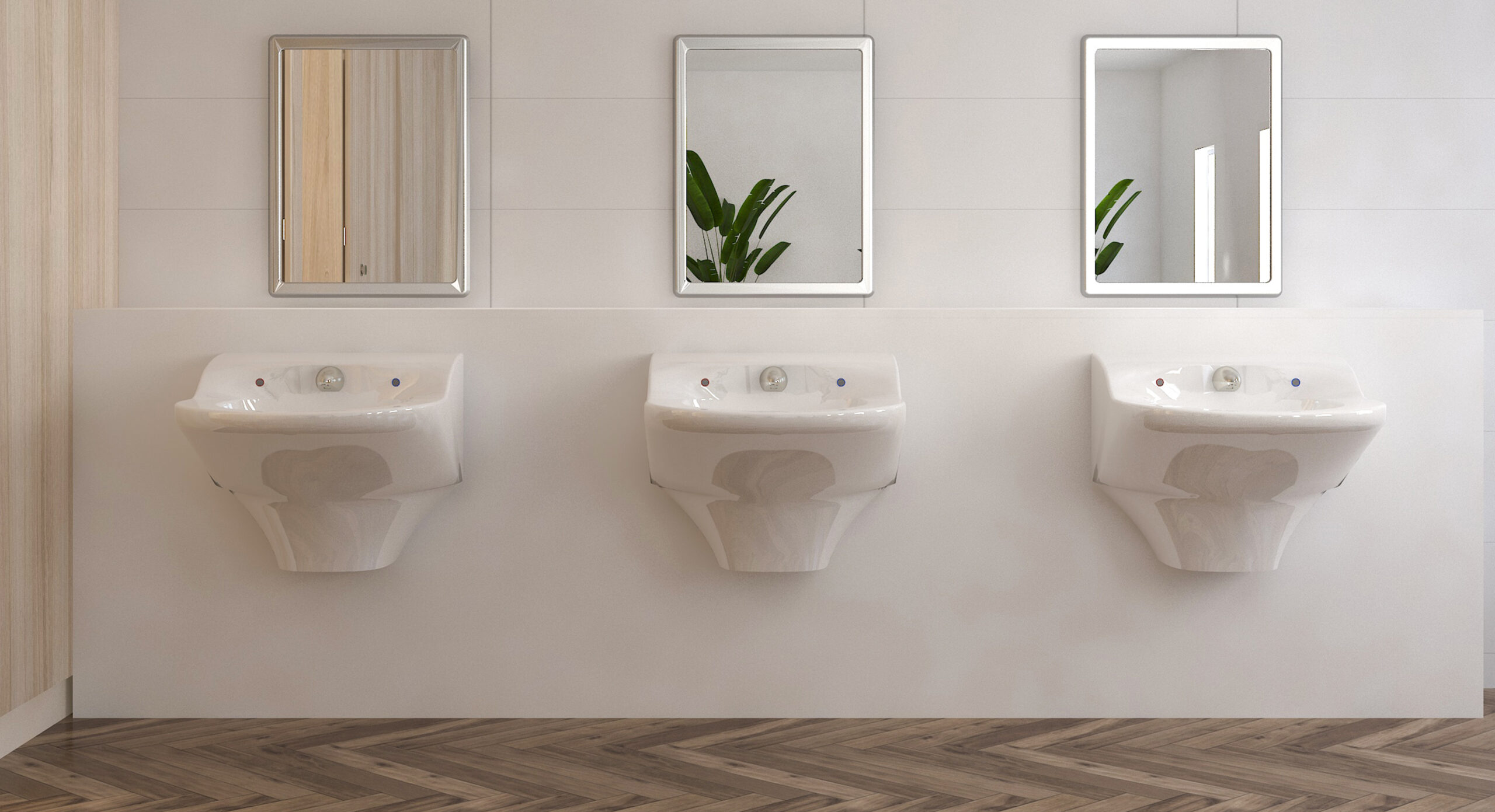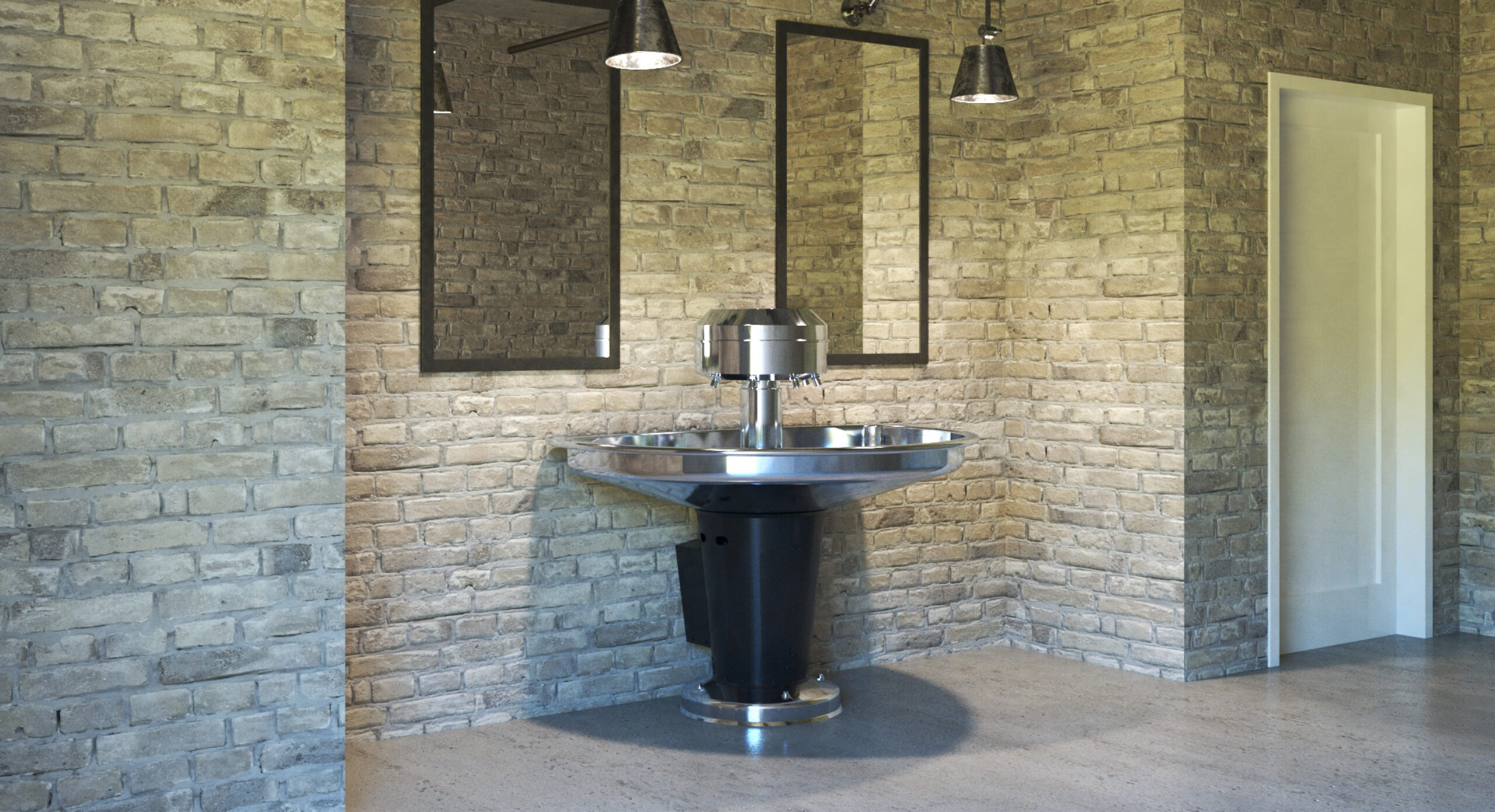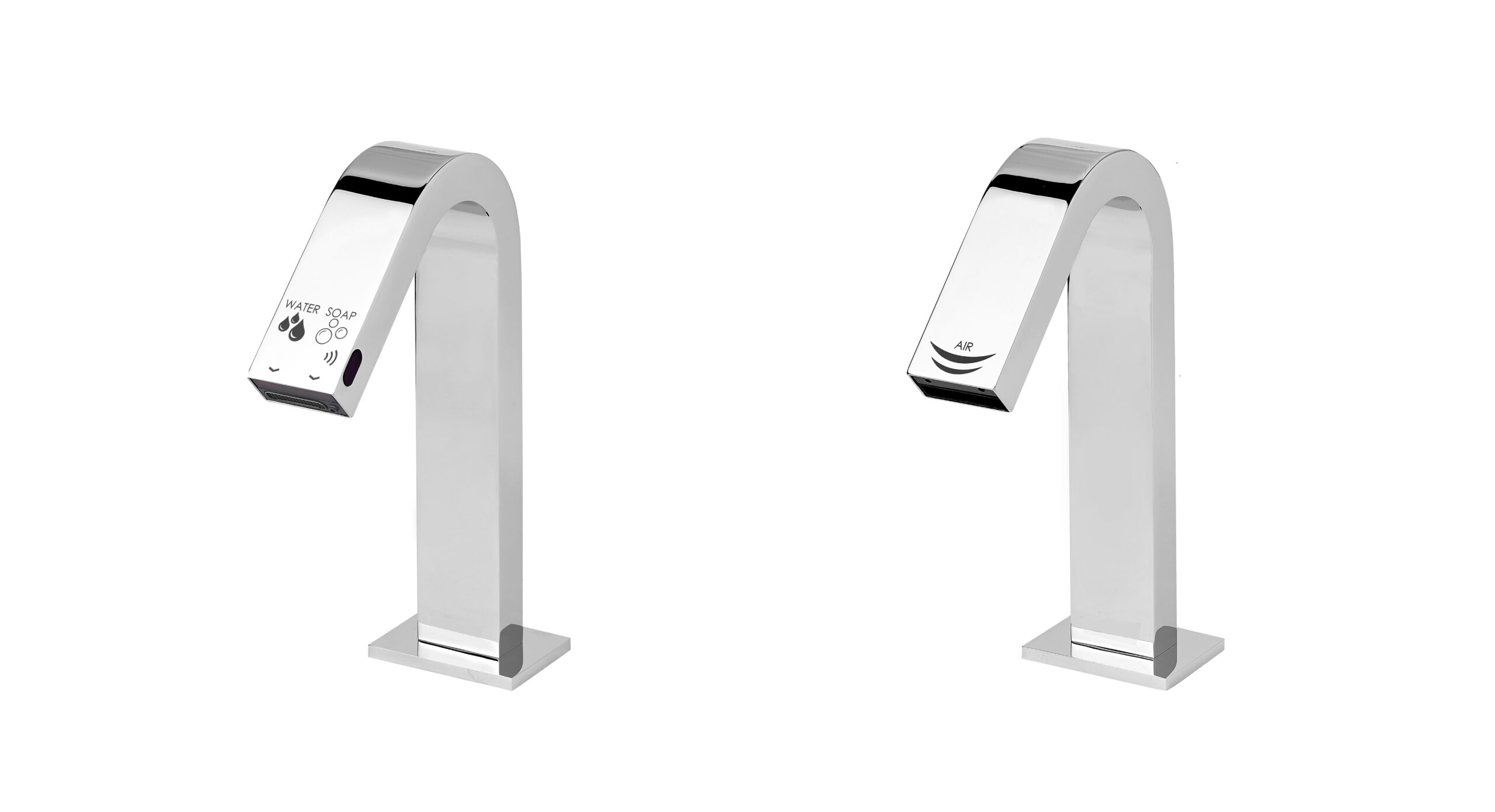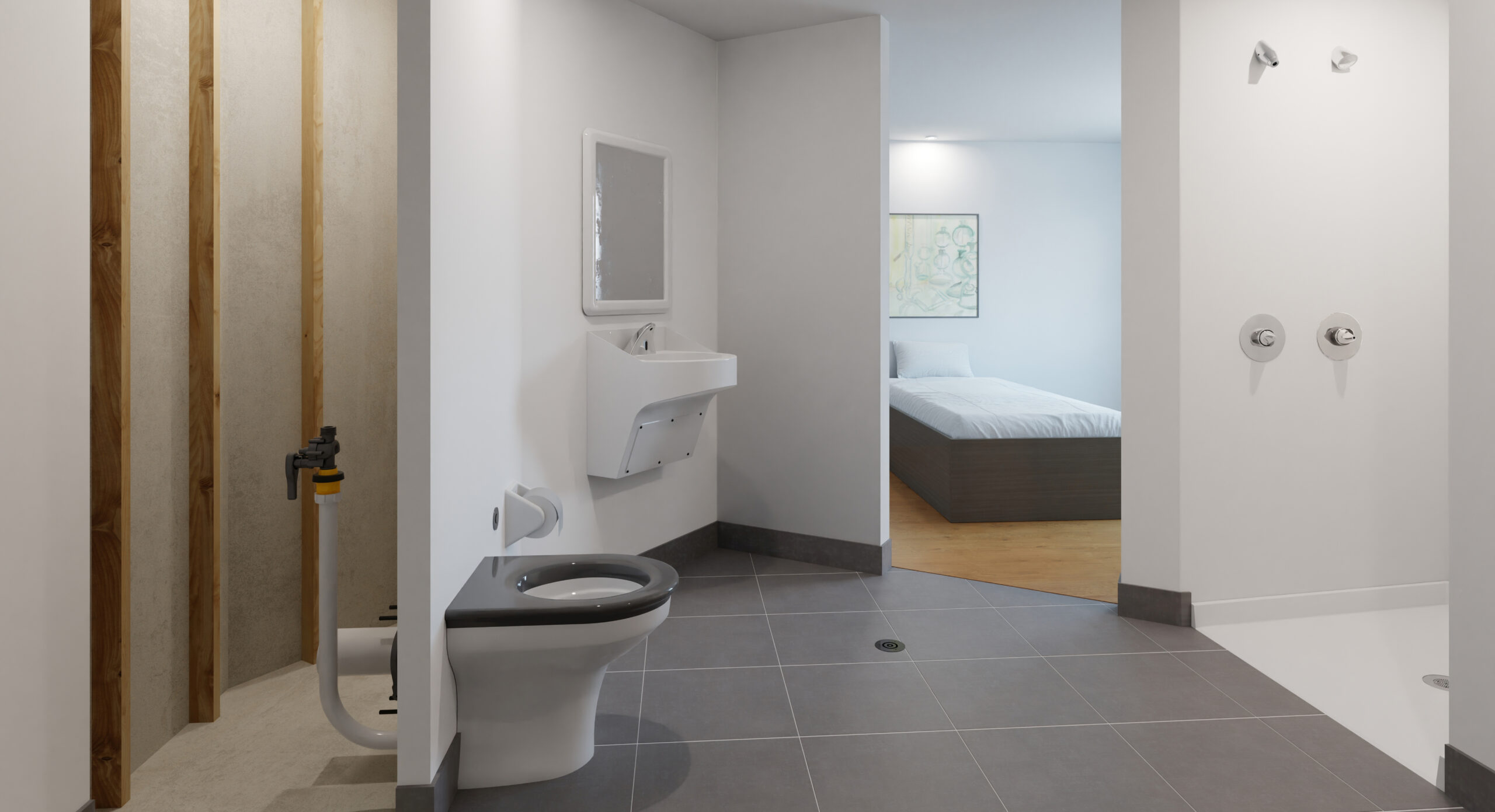Wim
Stainless Steel Maintenance and Cleaning
STAINLESS STEEL MAINTENANCE AND CLEANING
Stainless steel is a popular material for a variety of applications due to its durability, resistance to corrosion, and sleek appearance. However, stainless steel can still be affected by dirt, grime, and other substances, which can cause discoloration and staining. To keep stainless steel looking its best, it’s important to properly clean and maintain it.
Cleaning Stainless Steel
Stainless steel should be cleaned regularly to prevent the build-up of dirt and grime, which can cause discoloration and staining. It is important to clean stainless steel carefully, as harsh cleaning agents can damage the material. Here are some tips for cleaning stainless steel:
- Use a soft cloth or sponge: Use a soft cloth or sponge to clean stainless steel, as rough materials can scratch the surface.
- Use mild soap and water: Clean stainless steel with mild soap and water. Avoid using harsh chemicals, such as bleach or ammonia, as they can damage the material.
- Dry thoroughly: After cleaning, make sure to dry the stainless steel thoroughly to prevent water spots.
- Avoid harsh cleaning agents: Avoid using harsh cleaning agents, such as steel wool or abrasive sponges, as they can scratch the surface of the stainless steel.
- Use a specialized cleaner: For stubborn stains, you can use a specialized stainless steel cleaner. Look for a cleaner that is specifically designed for stainless steel and follow the instructions carefully.
Maintenance of Stainless Steel
To maintain the appearance and durability of stainless steel, it’s important to follow proper maintenance procedures. Here are some tips for maintaining stainless steel:
- Protect from scratches: Avoid scratching the surface of the stainless steel by using soft cloths or coasters for glasses.
- Prevent corrosion: Stainless steel is resistant to corrosion, but it can still be affected by exposure to moisture or acidic substances. To prevent corrosion, keep stainless steel dry and clean and avoid exposing it to acidic substances, such as vinegar or citrus juice.
- Remove stains promptly: If you notice a stain on your stainless steel, remove it promptly to prevent it from becoming difficult to remove.
- Avoid harsh chemicals: Avoid exposing stainless steel to harsh chemicals, such as bleach or ammonia, as they can damage the material.
- Clean regularly: Regular cleaning is important to prevent the build-up of dirt and grime, which can cause discoloration and staining.
Conclusion
Stainless steel is a popular material due to its durability, resistance to corrosion, and sleek appearance. To keep stainless steel looking its best, it’s important to properly clean and maintain it. When cleaning stainless steel, use a soft cloth or sponge, mild soap and water, and avoid harsh cleaning agents. For maintenance, protect stainless steel from scratches, prevent corrosion, remove stains promptly, avoid harsh chemicals, and clean regularly. By following these tips, you can ensure that your stainless steel remains in great condition for years to come.
Advantages of Solid Surface Shower Pans
Solid surface shower pans offer numerous advantages compared to other materials used for shower bases. Here are the top benefits of using solid surface shower pans:
- Durability: Solid surface shower pans are made from a blend of acrylic and polyester resins, which makes them incredibly durable and resistant to scratches, cracks, and chips.
- Water Resistance: The solid surface material is non-porous and does not absorb water, making it a great choice for shower pans. This eliminates the risk of mold and mildew growth and reduces the need for frequent cleaning.
- Easy to Clean: Solid surface shower pans are simple to clean and maintain, with no grout lines or seams to trap dirt and grime. They can be cleaned easily with soap and water or a mild cleaner, ensuring a long-lasting and hygienic showering experience.
- Customizable: Solid surface shower pans come in a wide range of colors, patterns, and textures, making it easy to find a product that fits your bathroom’s style. Additionally, solid surface shower pans can be customized to your specific showering requirements, providing a perfect fit and a seamless look.
- Aesthetically Pleasing: Solid surface shower pans have a sleek and modern appearance that complements most bathroom designs. They provide a smooth and uninterrupted surface, creating a minimalist and uncluttered look.
- Seamless Integration: Solid surface shower pans can be integrated seamlessly into your bathroom’s design, blending in with your bathroom’s wall and floor tiles.
- Cost-Effective: Solid surface shower pans are a cost-effective option compared to other materials, such as tile or stone, making them a great option for budget-conscious owners..
- Easy to Install: Solid surface shower pans are lightweight and easy to install, reducing the need for professional installation.
- Warm to the Touch: Solid surface shower pans are warm to the touch, making them comfortable to stand on even in the winter months.
- Low Maintenance: Unlike tile or grout, solid surface shower pans require little maintenance, making them a low-maintenance option for busy homeowners.
In conclusion, solid surface shower pans provide a number of benefits over other materials commonly used for shower bases. They are durable, water-resistant, easy to clean, customizable, aesthetically pleasing, seamless, cost-effective, easy to install, warm to the touch, and low maintenance. Whether you are building a new bathroom or remodeling your current one, solid surface shower pans are an excellent choice for a shower base that will last for years to come.
To learn more, visit our page on shower systems or contact us today!
Restroom Space Planning
Public restrooms are often utilitarian spaces that can be stark, uninviting, and even downright ugly. If you are planning to build a new bathroom or remodel an existing one for your facility, working with an architect can go a long way to create an accessible, functional, and beautiful space that will make your patrons happy.
Benefits of Restroom Space Planning
The American with Disabilities Act (ADA) ensures that restrooms are accessible to everyone, including people with disabilities. Guidelines for restroom space planning can be found on the ADA website and state building departments. Your architect and contractor should be able to help you with the technical details.
Well planned and ADA compliant bathrooms benefit not only customers but business owners too.
- More business. Clean, inviting, and accessible restrooms make people happy and attract potential customers. Satisfied patrons are more likely to spread the word to others about how much you care about your customers, thus promoting your business.
- More savings. Many bathroom fixtures are designed to save water, energy, paper towels, tissues, liquid soap, and other resources. Energy efficient fixtures could significantly slash your utility bills each month. Compliance with ADA regulations also reduces the risk of complaints and potential lawsuits.
- Improved safety. ADA requirements are designed with accessibility and safety in mind, and compliance means improving the overall safety of your facilities. You can sleep well knowing that your restroom fixtures won’t cause injury or harm.
- Improved hygiene. Well-designed restrooms encourage frequent handwashing, improve hygiene, and prevent the transmission of disease-causing germs. When your restrooms are clean, safe, and inviting, people are more likely to use the lavatories to clean their hands.
- Long-lasting facilities. Well-designed restrooms are built to last. From the lights to the tiles on the floor, the use of high-quality materials ensures durability. Some bathroom products even come with anti-vandal features to prevent tampering and keep the fixtures in pristine condition as long as possible.
Technical Requirements for Restroom Space Planning
Every fixture in a public or commercial restroom must be up to standard. The different measurements for shower stalls, toilets, urinals, lavatories, tubs, grab bars, doors, and door handles can be found on the ADA website. Actual measurements and spacing depend on what you plan to install in the restroom and what your state requires. Make sure to check the local code before starting to build or remodel.
Clear Space
A restroom must fully accommodate a single wheelchair and allow it to rotate freely. The clear rotating space must be at least 60 inches in diameter. Some of this space can be under a fixture in certain cases.
Toilet Stalls
Stalls must be at least 60 inches wide and have enough space for a wheelchair for a forward or side approach to the toilet.
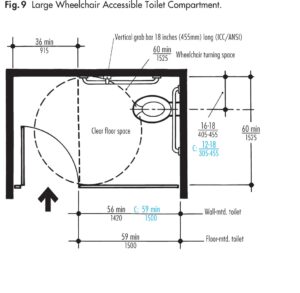
Toilets
Toilet seats must be installed 17 to 19 inches from the floor, with clear space for a wheelchair around the toilet (either forward or parallel approach) measuring 30 by 48 inches. In certain cases, some clear space can be located under fixtures to meet the minimum requirement, but the legs must be free to move without obstruction. The flush control should be installed at a maximum of 44 inches above the floor on the side of the toilet with the clearest floor space.
Sinks/Lavatories
At least one lavatory must be present in each bathroom, installed no higher than 34 inches from the floor. The lavatory must extend at a minimum of 17 inches from the back wall with a 29-inch clearance from the bottom of the sink apron to the floor. Countertop sinks must be no more than two inches from the edge of the countertop.
Grab Bars/Hand Rails
Horizontal grab bars must be installed behind the toilet on the nearest wall 34 to 38 inches above the floor. Hand rails must be fully anchored and easy to grab. They must be 1.25 to 1.5 inches in diameter.
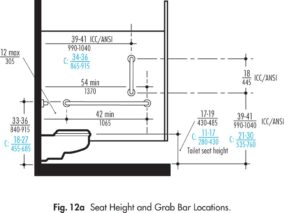
Accessories
ADA compliant bathrooms require touch-free hand dryers and soap dispensers that can be accessed by left- or right-handed users. The hand dryer sensor must be 38 to 48 inches above the floor.
To learn more, visit our page on restroom products or contact us today!
Anti-Microbial Lavatory Systems
COVID-19 has changed the way we live in a matter of months. In addition to the economic and psychological impact of social distancing, there’s a newfound fear of infectious disease and carriers like viruses and bacteria. In the long term, individuals, businesses, and governments are expected to shift focus towards creating cleaner and more hygienic places to live and work.
Businesses are already increasing the demand for antimicrobial building materials, especially in publicly accessible spaces like bathrooms. While there’s still no product proven to protect against COVID-19 and coronaviruses, the use of antimicrobials is in line with CDC guidelines and remains a great first line of defense.
Antimicrobial surfaces on bathroom fixtures have been proven to actively reduce microorganism populations, prevent cross contamination, and stop the spread of infectious disease. Antimicrobial lavatory systems can be part of infection control procedures in facilities with high hygiene standards. These include healthcare and food preparation facilities.
Many hospitals already use antimicrobial lavatory systems and other fixtures to control infection and minimize the transmission of disease-causing pathogens. Antimicrobial sinks can be installed in patient rooms, intensive care units (ICUs), restrooms, laboratories, and housekeeping areas.
Antimicrobial Lavatory Surfaces
Plumbing fixture manufacturers use different types of antimicrobial surfaces. The most common are baked on, powder-coat finishes with an antimicrobial agent and plastic or composite materials with the antimicrobial agent mixed into the polymer during processing. The antimicrobial agent usually contains silver ions to neutralize microbes on surfaces.
The antimicrobial agent is released on contact with moisture and is designed to be effective against a range of microorganisms. The mechanism of action is simple: The positively-charged antimicrobial agent attracts negatively-charged microbes when in contact with moisture. The resulting electrical imbalance cause the microbe’s cell wall to burst and kill the organism.
Cleaning products and disinfectants do not reduce the effectiveness of the antimicrobial agent, which remains active throughout the product’s lifetime. Antimicrobial agents can be used in a variety of fixtures, including lavatory systems, toilets, shower pans, sinks, door handles, toilet flushes, and faucet levers.
Benefits of Antimicrobial Lavatory Systems
Prevents the buildup of bacteria, mold, and mildew. Antimicrobial lavatory systems are proven effective against microorganisms. Antibacterial properties combined with solid surfaces prevent the buildup of dirt, mold, and mildew.
Improves hand hygiene. Hand hygiene is one of the best ways to prevent disease transmission. Antimicrobial lavatory systems actively kill bacteria and prevent cross contamination to ensure that hands stay clean after washing.
Resists stains. Antimicrobial surfaces are designed to be durable and stain resistant. The material won’t burn, stain, or dissipate even when using chemical disinfectant. Dirt can easily be wiped off or scrubbed away with household cleaning products. Stain-resistant fixtures keep facilities clean and aesthetic.
Safe for food preparation. Some antimicrobial lavatory systems are designed specifically for handwashing use only, while others are safe for use in food preparation facilities. Check with the manufacturer to make sure you are getting the right type for your facility.
Resource efficient. Many antimicrobial lavatory systems are resource efficient and meet or exceed LEED requirements. Installing these fixtures reduces waste and shows customers that you care for the environment.
Durable. Some antimicrobial lavatory systems are designed to stand up to the heaviest abuse. These fixtures are ideal for behavioral healthcare settings as well as hospitals. Spend less money on repairs and maintenance by choosing high-quality bathroom fixtures.
Aesthetic. Most manufacturers produce antimicrobial lavatory systems that are both functional and aesthetic. Choose from an array of colors to complement existing layouts or new builds and install modular units to fit your space exactly. Some units can even be customized to exact requirements.
Make customers and patients feel at home. Institutional fixtures tend to be cold and ugly. Modern antimicrobial lavatory systems are like those you would normally find in residential settings. These add a touch of home to any space and make users feel at ease.
Seamless design. Antimicrobial solid surface lavatories are seamless. This means no grooves or crevices where bacteria can hide. Seamless designs not only look modern and beautiful, they also aid in infection control.
No need to seal or paint. Antimicrobial solid surface fixtures are low maintenance by design. No need to reseal or paint every few months. Dirt, grease, and stains are easily removed with household cleaners or abrasive material.
Helps businesses save money. Antimicrobial lavatory systems made from high-quality materials tend to be more expensive than standard fixtures, but help businesses save money in the long run. Durability, resource efficiency, and reduced maintenance help reduce bills and costs.
To learn more, visit our page on lavatory systems or contact us today!
ADA Compliance in Restrooms
ADA compliance in restrooms is easy to achieve for business owners who understand the requirements. If you’re a new business looking to set up a physical store (or anyone who wants more information about ADA compliant restrooms and establishments), this article will help you get started.
ADA Compliance in Restrooms: What is the ADA?
The Americans with Disabilities Act (ADA) is a civil rights law passed in 1990. The law prohibits discrimination against individuals with disabilities in all areas of public life, including jobs, schools, transportation, and public and private places that are open to the public. The goal of the ADA is to ensure that people with disabilities have the same rights and opportunities given to individuals on the basis of age, sex, race, religion and national origin. The ADA guarantees that individuals with disabilities have equal opportunities in public employment, transportation, state and local government services, telecommunications and accommodations.
An amendment to the ADA was signed into law (ADAAA) in 2008 and took effect on January 1, 2009. The ADAAA significantly changed the definition of ‘disability.’ These changes apply to all titles of the ADA, including Title I, Title II and Title III. Title III includes private entities considered to be places of public accommodation, Tile II refers to state and local government activities, and Title I covers employment practices.
The ADA of 1990 includes guidelines for building ADA compliant restrooms. These requirements must be met for public and commercial bathrooms. They can also be used as a general guide for constructing safe and accessible establishments when ADA compliance is not mandatory. In addition to the ADA compliant restrooms, business owners must also meet additional requirements that may be set by the local code authority.
ADA Compliant Restrooms Dimensions
Dimensions are important when building ADA compliant restrooms. These dimensions are designed for accessibility, safety and ease of use for individuals with disabilities and limited range of motion. Detailed information and the ADA Accessibility Guidelines (ADAAG) are available on the U.S. Access Board website.
Doors
To be ADA compliant, doors should open with minimal force and have handles that are easy to grab with one hand. Doorways should be at least 32 inches wide with the door open at 90 degrees.
Door Latches
Door latches and other parts must be operable with one hand, using less than five pounds of pressure. Door latches must not need tight grasping, twisting or pinching of the wrist to operate.
Rotating Space
A single wheelchair must be able to freely rotate inside an ADA compliant bathroom. This requires a clear floor space of at least 60 inches in diameter to allow for a 180-degree turn. In some cases, open space under a fixture can supplement the clear floor space to meet the minimum requirement.
Dispensers
For dispensers that protrude from the wall in restrooms and toilet stalls or anything that a person might need to reach should be a maximum of 48 inches from the finished floor. Toilet tissue must be within arm’s reach and the outlet of the tissue dispenser must be between 24 inches minimum and 42 inches maximum from the back wall and at least 18 inches above the finished floor. The ADA guideline defines “easily within arm’s reach” as within 7-9 inches from the front of the bowl and at least 15 inches above the finished floor or 48 inches maximum.
Grab Bars
Grab bars are hand rails that are used for support when moving around a room. They are not used for hanging towels, and towel bars are not intended to be used as grab bars. An ADA compliant grab bar must be fully anchored and have a smooth surface for easy grabbing. The bar itself must be 1.25 to 1.5 inches in diameter, at least 36 inches long on the rear wall or 42 inches on the side wall and must be installed between 33 to 36 inches above the floor. At least 1.5 inches of space must separate the bar from the wall surface. The bar must have round edges and no exposed ends. It must be able to withstand at least 250 pounds of pressure.
Lavatories
At least one lavatory must be present in each bathroom. To be ADA compliant, the lavatory must be at least 17 inches from the back wall and not be installed higher than 34 inches. Knee clearance must be 27 inches high, 30 inches wide and 11 to 25 inches deep. Countertop lavatories should be installed no more than 2 inches from the front edge of the counter. In addition, there must be clear floor space and insulated pipes under the sink.
Faucets
Faucets should be operated by a lever or controlled by push, touch or electronics. Individuals must be able to use faucets with one hand without needing to exert more than five pounds of force to operate the faucet. The user also shouldn’t need to grasp, pinch, or twist the wrist when using the faucet.
Water Closets
Water closets must be 17 to 19 inches from the floor to the top of the toilet seat. Flush valves shouldn’t need tight grasping, pinching, or twisting of the wrist.
Hand Dryers
ADA compliant bathrooms must have touch free or motion activated hand dryers with sensors that are 38 to 48 inches above the finished floor. The hand dryer itself must be accessible for right- and left-handed users.
Mirrors
Mirrors must be mounted with the bottom edge of the reflective surface at a maximum of 40 inches above the floor with the top edge at least 74 inches from the floor. If it’s not possible to install a mirror 40 inches above the floor, a full-length mirror fulfills the ADA requirement.
Trash Cans
Recessed trash receptacles or a combination of paper towel dispenser and trash bin is recommended. Trash bins on the floor are barriers to someone in a wheelchair when reaching for a dispenser mounted above it.
Toilet Stalls
Toilet stalls must be at least 60 inches wide and have enough space to fit a single wheelchair in front of or parallel to the toilet. Horizontal grab bars must be installed behind the toilet and on the nearest wall or partition, whichever is nearest. There must be at least 30 x 48 inches of clear space around the toilet to fit a single wheelchair.
The clear space must be designed for either a forward or parallel approach to the toilet. Parts of the clear space can be under fixtures to meet the minimum requirement, as long as there is enough space for the legs to move around freely when the individual is seated in a wheelchair. The toilet seat must be 17 to 19 inches above the finished floor. The flush control must be on the open side of the toilet with the clearest floor space and installed no higher than 44 inches above the floor.
Urinals
ADA compliant urinals should be wall mounted or stall type at a maximum of 17 inches from the floor.
Ensuring ADA Compliance in Restrooms
Working with an ADA expert before construction will save you a lot of headaches, as compliance is a civil rights issue and may be out of the purview of engineers, architects and contractors regardless of how knowledgeable they are about building code.
Want to know more about ADA-compliant restroom fixtures? Don’t hesitate to contact us today!
Sanispray Sensor Wash Fountains
Healthcare and industrial settings tend to have hygiene standards higher than the average facility and their restroom and washroom fixtures reflect this. In the age of COVID-19, public and commercial spaces are rethinking building design and many owners are installing sensor and antimicrobial devices to keep disease at bay.
Sensor bathroom fixtures have been around since the 1980s, and they are making a comeback in many establishments to help protect staff and customers from infection. Electronic fixtures are operated by sensors that scan for objects in its detection area and activates the operation, whether it’s turning on the faucet or flushing the toilet automatically.
The benefits of electronic fixtures (water and energy conservation, antimicrobial features, ease of use, etc.) are obvious and trump the disadvantages. While sensor devices tend to be more expensive than manual units, they quickly pay for themselves.
One of the biggest complaints from users is the failure of sensors to detect objects. You have to wave your hands several times to get the faucet to work, for example. For brand-new units, this is usually caused by something covering the sensor area. Older units may simply need a new battery or a tune up.
Wash Fountains
The lavatory area can be high risk due to multiple people standing close together. Sensor faucets, dispensers and dryers can be installed along with antimicrobial solid surface sinks to make the space as safe and hygienic as possible.
In settings where space is limited, wash fountains are the best alternative. Wash fountains are freestanding systems that take up significantly less space than lavatories of equal capacity. AquaDesign wash fountains save up to 30 percent floor and wall space compared to an equal number of traditional lavatories.
They are designed for use by large groups of people, with some units supporting up to 8 users at the same time. In addition, the compact and space saving design offer an efficient traffic pattern in busy areas like factories.
AquaDesign Sanispray Sensor Washfountains
AquaDesign provides wash fountains in all sizes and with many types of activation. Our circular, semi-circular and corner washfountains fit any space requirement and has anti-vandal features for durability.
Sanispray Sensor Circular Washfountain
The circular washfountain is designed for 6 to 8 users and ideal for use in areas with heavy traffic that lack free wall space. Each of the stations have their own micro-processor, battery and sensor that controls each solenoid valve. The stainless-steel bowl measures 39-54 inches and is supported by a pedestal of 12-gauge steel that houses supply and vent pipes and supports the water distribution head.
The bowl has a parabolic shape for extra strength. This keeps water spray and splashes inside the bowl and makes the unit self-cleaning and self-draining. For ultimate safety and hygiene, the bowl can be supplied with an antimicrobial solid surface. Solid surface is made from composite material that have no crevices or seams where germs can hide. The unit can also be supplied with a hands-free soap dispenser with a preset amount of soap per shot.
Sanispray Sensor Semi-Circular Washfountain
The semi-circular Sanispray sensor washfountain is a standalone lavatory that can serve from 3 to 5 users at the same time. It is ideal for heavy traffic areas with available wall space. Each station has its own sensor to activate water flow.
The stainless-steel bowl is parabolic shaped to keep water, soap and mess inside the bowl. This makes the unit self-cleaning and self-draining. The bowl can be fitted with an antimicrobial solid surface and hands-free soap dispensers can be installed for an automated germ-free environment.
A 12-gauge steel pedestal supports the bowl and stores supply pipes, vent pipes and the water distribution head. The vandal resistant panel at the front prevents tampering of electronic components. Wall braces are not needed as the vent pipe serves as the central tie part for the rigid assembly.
Sanispray Sensor Corner Washfountain
When wall space is limited in high traffic areas, the Sanispray sensor corner washfountain is recommended as an alternative to traditional lavatory systems. It serves up to 3 users simultaneously. The ADA-compliant corner washfountain is pre-assembled and pre-plumbed for fast and easy installation (either floor mounted or wall hung).
The stainless-steel parabolic bowl is self-draining, self-cleaning and contributes to LEED requirements. The design ensures that water stays in the bowl. Spray nozzles are vandal resistant and have built-in automatic flow control to reduce water waste. The pedestal support also comes with a vandal resistant access panel to prevent damage to internal components.
To learn more, visit our Sanispray sensor wash fountains page or contact us today!
Reduce Infection Risk with Hands Free Soap and Water Faucets
Hands free soap and water faucets have been around for decades and they may become even more ubiquitous now that hygiene has become top priority. Hands free soap and water faucets and similar sensor fixtures may not completely protect people against the new coronavirus, but they can be an important line of defense in the fight against infection.
The Centers for Disease Control (CDC) and the World Health Organization (WHO) say that frequent handwashing with soap and water is the single most effective way to protect yourself against disease. Handwashing for at least 20 seconds before eating, after going to the bathroom and before preparing food removes not just visible dirt and invisible germs but also chemicals.
In the absence of soap and water, the CDC recommends the use of alcohol-based (at least 60 percent) hand sanitizer to clean your hands. In bathrooms without hands free fixtures, use a paper towel to turn off faucets, open and close doors, and flush toilets to prevent the re-introduction of germs to clean hands.
Hands Free Operation for Water and Soap
By design, hands-free fixtures avoid contact with surfaces to reduce cross contamination. Combination units like hands free soap, water and hand dryer lavatories are even better because users can wash and dry their hands in one place without touching anything. This also keeps messes from splashing on the counter and the floor.
Electronic soap and water faucets are controlled by sensors. This is usually an infrared light or ultrasonic field that detects skin and sends a signal to the faucet valve. When sensors detect the presence of an object, like a hand, they turn on the soap dispenser or the flow of water. Sensors automatically turn off the tap when the object leaves the detection area. Sensors are usually located at the base of or near the spout.
How Hands Free Soap and Water Faucets Reduce Infection Risk
COVID-19 has introduced new challenges for business owners and facility managers, who are legally responsible for the health and safety of staff and employees. Many are rethinking building and restroom design for the first time. Touch-free bathroom fixtures as well as automatic temperature monitors are becoming standard in many places.
Why use sensor faucets with soap dispensers?
Better hand hygiene. Electronic soap and water faucets allow users to keep their hands clean and prevent cross-contamination. No need to touch germ-ridden buttons or handles before or after handwashing. And because they are so easy to use, sensor faucets and soap dispensers encourage frequent handwashing.
Cleaner bathrooms. Standing water on counters and bathroom floors are breeding grounds for harmful germs. Hands free soap and water faucets prevent drips and splashes, keeping the mess in the sink and not on the floor. For public settings, this means cleaner bathrooms and less maintenance required.
Save soap and water. Electronic soap and water faucets dispense a preset amount of liquid soap per shot. This can be adjusted to suit your needs. The water also turns off automatically when hands leave the sensor area so the tap is not always running. With the faucet off, users can focus on washing their hands properly.
Improve accessibility. Most hands-free soap and water units are compliant with accessibility requirements like the American with Disabilities Act (ADA). This makes it a snap for children, the elderly, and individuals with disabilities to clean their hands.
Save money. Sensor faucets and fixtures tend to be more expensive than manual units. However, the initial investment is recouped over time because of water and energy saving features.
Better design. Electronic faucet design has vastly improved over the years. There are more options available, whether for industrial, residential, public or commercial use. Modern materials and sleek designs are perfect for offices, restaurants and shops, while robust, heavy-duty styles with antimicrobial properties are suited for healthcare and industrial settings.
AquaDesign Hands Free Faucets and Fixtures
AquaDesign manufactures electronic bathroom fixtures like the Omnia hands free soap and water faucet for an automated and germ-free experience. The deck-mounted design ensures that soap does not drip on the floor so users spend less time in the bathroom. The unit comes with a 0.4 gallon soap dispenser container that is easily removed for refilling.
AquaDesign faucets feature a modern and streamlined design that is ideal for any setting. Made with high-quality solid surface materials, the fixtures are antimicrobial, easy to maintain and last a long time. Some of our fixtures have anti-vandal features that stand up to heavy abuse—ideal for healthcare and behavioral healthcare settings.
To learn more, visit our hands free soap and water faucets page or contact us today!
Designing Safe Spaces for Behavioral Health Patients
Designing safe spaces for behavioral health patients can be challenging as there is a need to balance aesthetics and functionality. You want to create an environment that supports patient autonomy, well-being and recovery while minimizing unwanted behaviors, especially self-harm.
Studies show that mental health facilities using familiar materials found in homes can improve patient comfort and support treatment. Home-like conditions also enhance patient satisfaction, leading to reduced rates of absconding or escape before treatment is completed.
Creating a home-like environment that mimics residential spaces can be done by choosing furniture, fixtures and layouts that are warm and welcoming and make patients feel comfortable, whether alone or in a group. Instead of institutional, prison-like elements, residential materials like brass and chrome are recommended.
Safe Space for Behavioral Health Patients: Bathroom Safety & Aesthetics
Traditionally, behavioral health facilities tended to emphasize safety while ignoring aesthetics and design. Safety is still a top consideration for today’s designers, but the trend is towards flexible, rich and complex residential spaces with access to outdoor areas.
When it comes to bathrooms, safety issues can be addressed with ligature-resistant fixtures, anti-slip surfaces, ergonomic design with universal access, and fixtures that comply with standards like the Americans with Disabilities Act (ADA).
Ligature-resistant fixtures
These are fixtures and design elements that have zero attachment points for cords that can be used for hanging or asphyxiation. Plumbing, pipes and valves must be concealed whenever possible. Exposed fixtures must be covered or re-installed flush with the wall to prevent gaps for hiding contraband or creating a ligature point.
Anti-slip surfaces
Even without other risks, bathrooms can be dangerous places due to slippery floors and walls. Water should be confined in the shower area, lavatory, and toilet to prevent drips, splashes and flooding. Anti-slip shower pans and materials that look beautiful and home-like are available from many manufacturers.
Solid surface materials
Unlike plastic and vitreous china, solid surface material is ligature-resistant and tamper proof. This means that patients can’t break the mirror, toilet or lavatory and use the sharp pieces for weapons.
ADA compliant
ADA-compliant fixtures ensure that bathrooms are accessible to as many patients as possible. ADA fixtures also rate highly on operability and ease of use. Patients should be able to control the water temperature and flow, for example, with only one hand and without using too much pressure.
Flexible design
Behavioral health facilities often have spaces for low, medium and high-risk patients. It’s important to choose the right fixture for the right space to ensure optimal safety. Heavy-duty, vandal-resistant and ligature-resistant fixtures are best for medium-to-high-risk bathrooms. For common areas and universal patient rooms, ligature-resistant fixtures are suitable.
Aesthetics
It’s possible to create safe spaces for behavioral health patients that do not look like prison cells. Manufacturers like AquaDesign offer durable, ligature-resistant fixtures that are home-like at the same time. Designers can avoid the institutional look by choosing familiar materials and finishes, providing enough storage and counter space, and providing comfortable lighting that is similar to residential lighting levels.
How AquaDesign Can Help You Create Safe Spaces for Behavioral Health Patients
AquaDesign is a leading manufacturer of commercial plumbing fixtures, with a unique range of products designed exclusively for mental health facilities and rehabilitation centers. We strive to provide the most effective and failsafe ligature-resistant solutions that meet the needs of any behavioral healthcare facility.
Designing safe spaces for behavioral health patients has never been easier, thanks to AquaDesign products that incorporate non-institutional and patient-centered elements. Our design guide for bathrooms is based on evidence and best practices to ensure optimal safety for patients, staff and caregivers.
Low- to Medium-Risk Spaces
The shower head, shower valve, lavatory, toilet, toilet roll holder, and mirror are all ligature-resistant and made with solid surface materials. The touch-button lavatory is antimicrobial and easy to operate. The shower pan is ADA-compliant and antimicrobial.
Medium to High-Risk Spaces
All products are heavy duty and ligature-resistant with solid surface construction. The shower pan is antimicrobial and ADA compliant, while the hand-held shower comes with a detachable adaptor for safety.
Electronically-Managed Spaces
For electronically managed rooms, our products allow healthcare providers to manage the use of power, water and lighting from a separate location. The electronic controller features time flow, hygiene purge cycles, time slots and lock out. Units can be networked or used locally.
Universal Healthcare Suite
AquaDesign products for universal healthcare suites are designed for multiple types of patients. The layout and fixtures improve patient flow and safety and allow staff to spend more time with the patients. All products are ligature resistant and made from solid surface material.
Retrofit
For remodels and retrofits of existing bathrooms, AquaDesign offers ligature-resistant products made from solid surface material. Toilets feature integral seats, and lavatories can be equipped with touch button outlets and ligature-resistant skirts.
To learn more contact us today!

